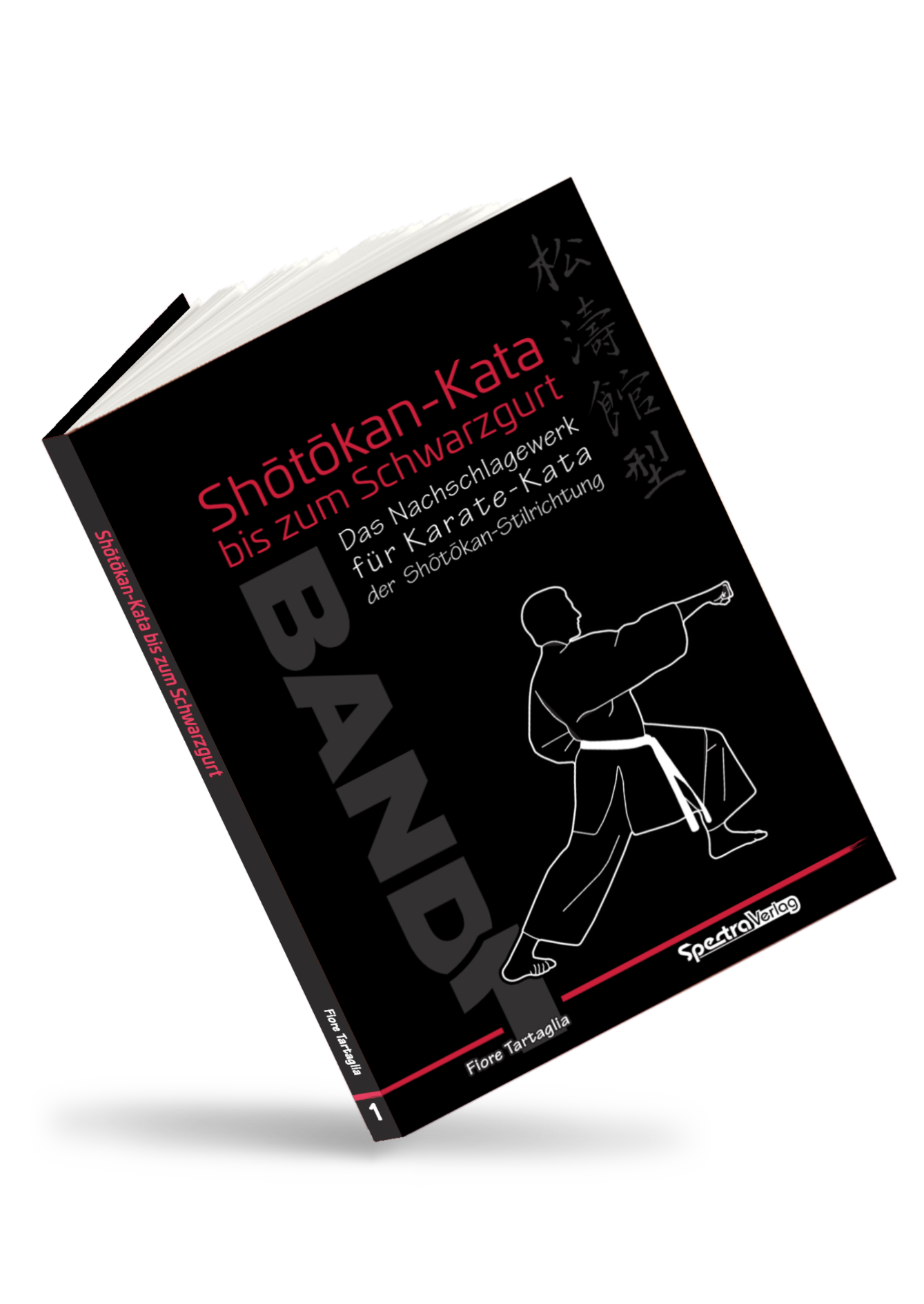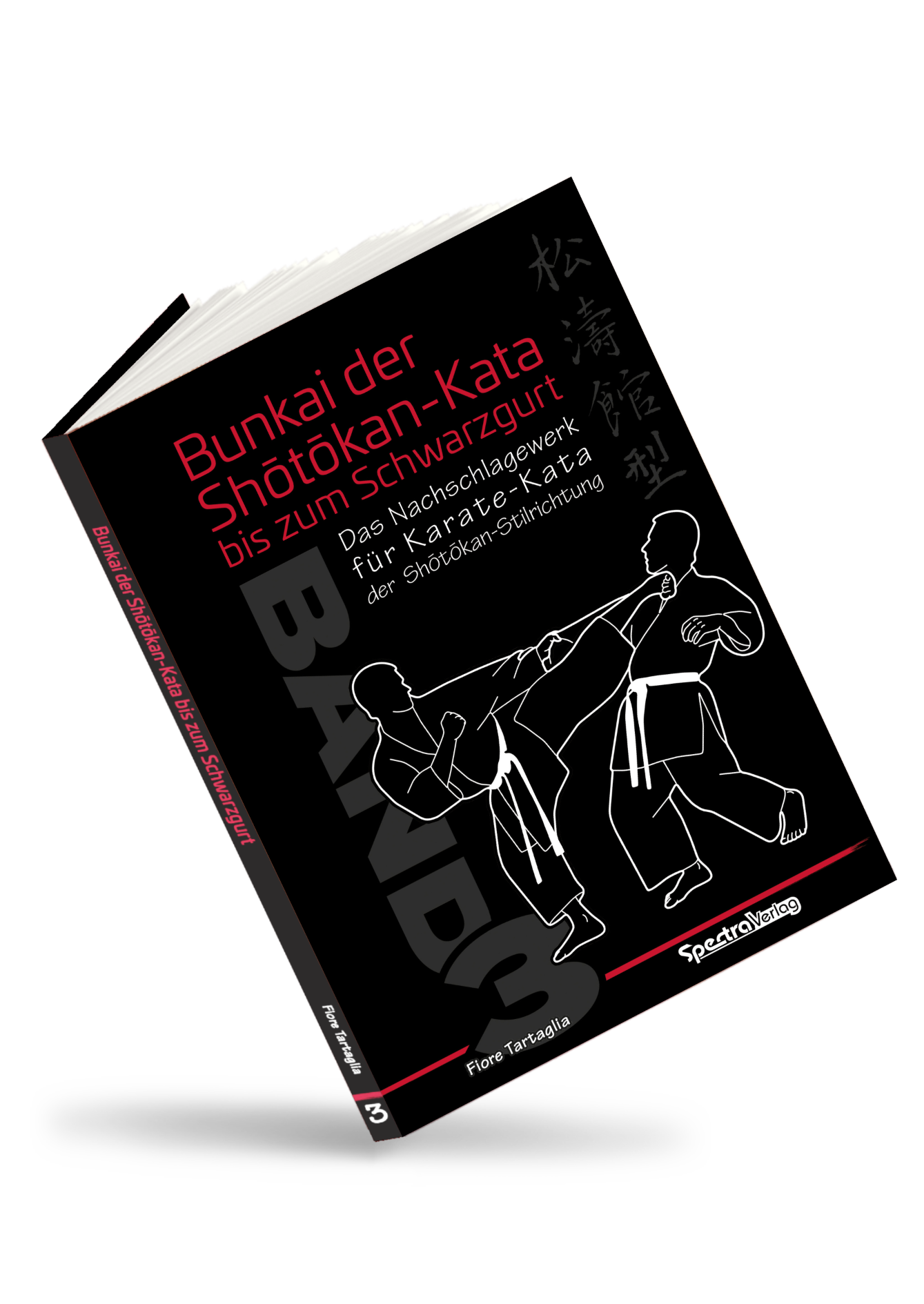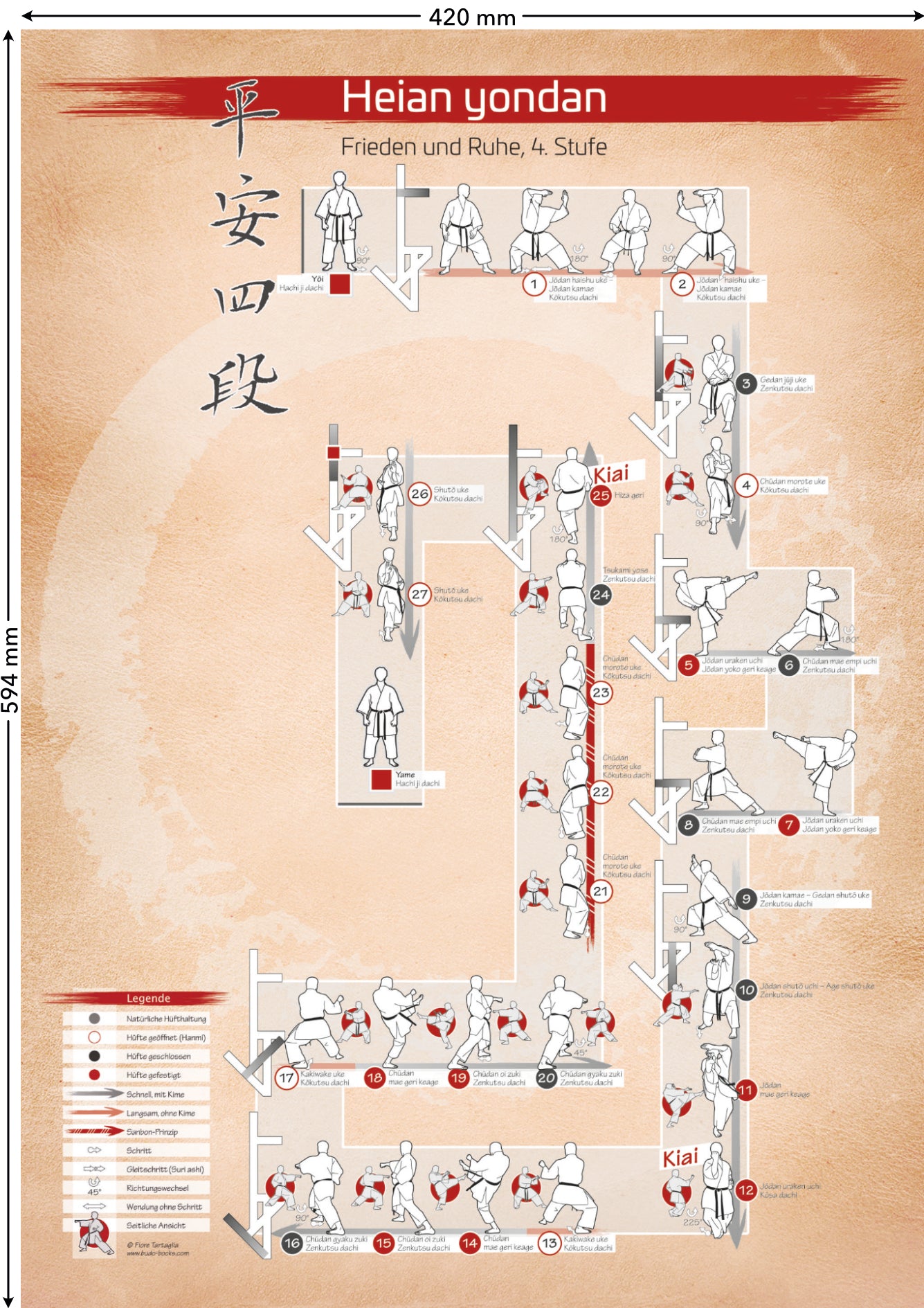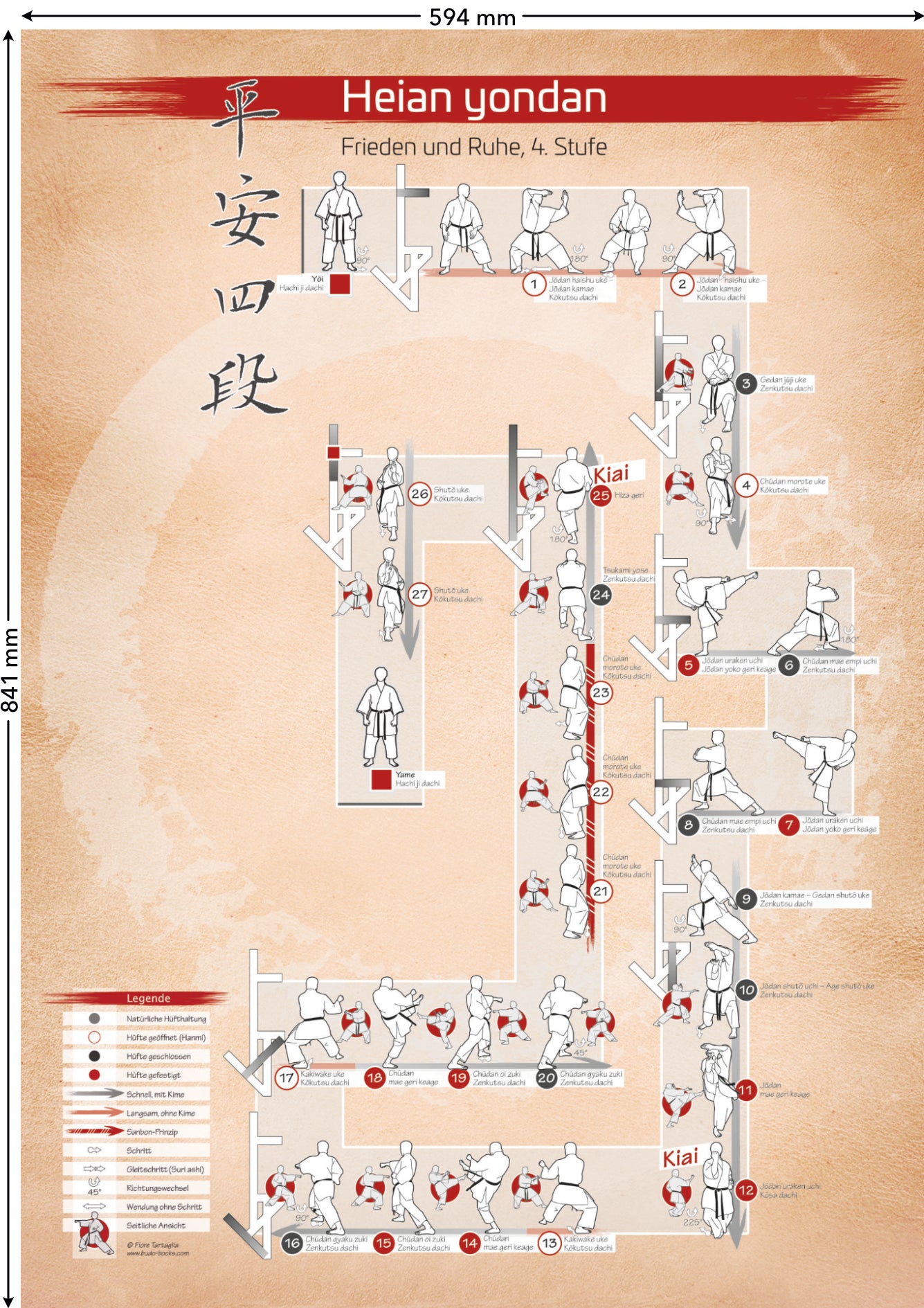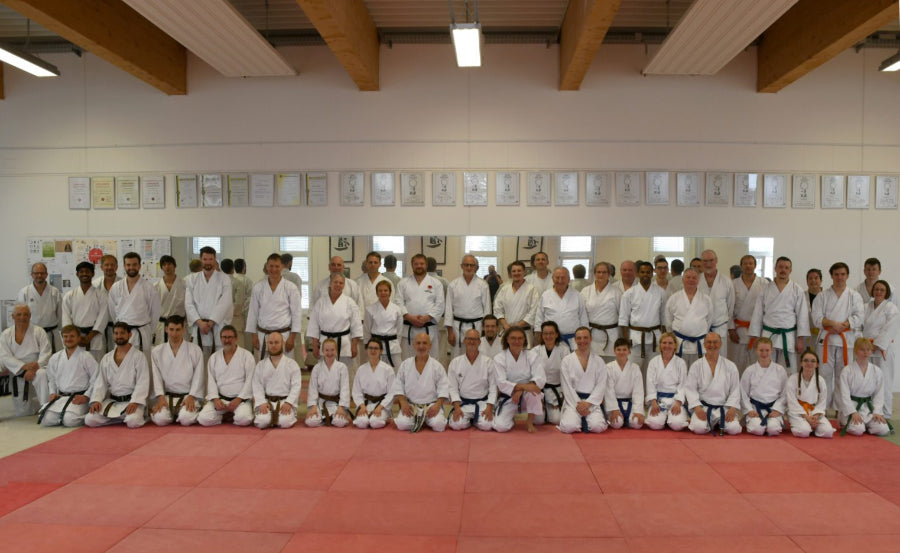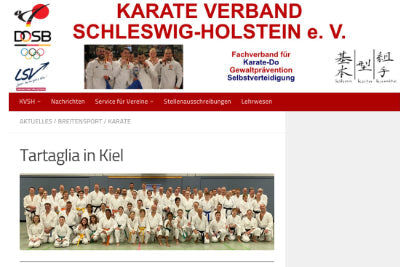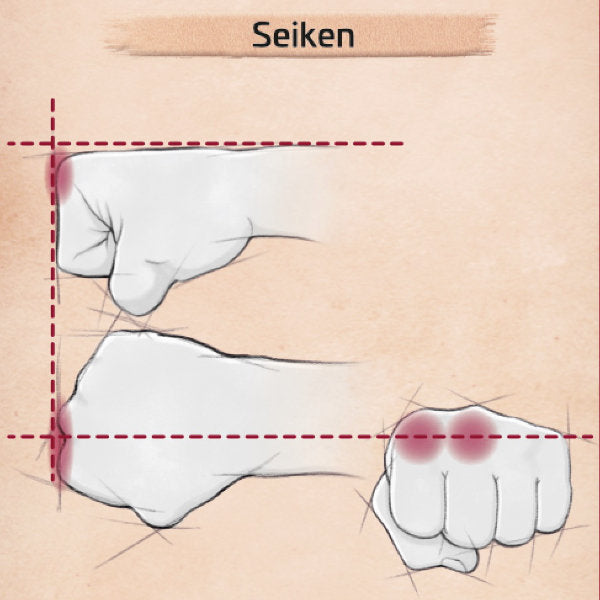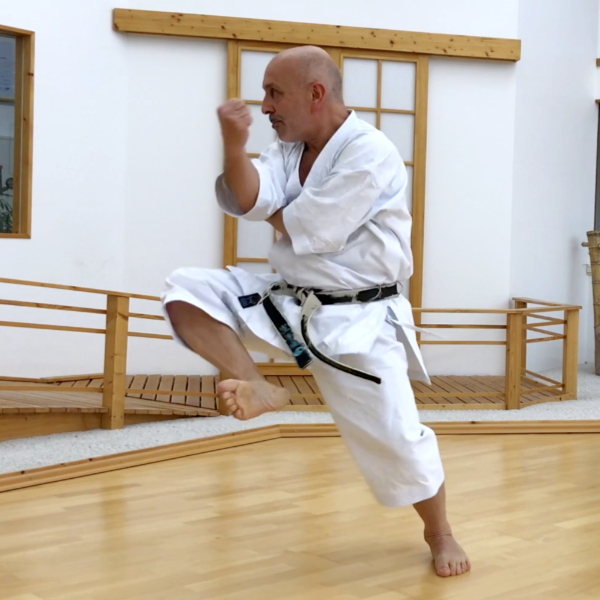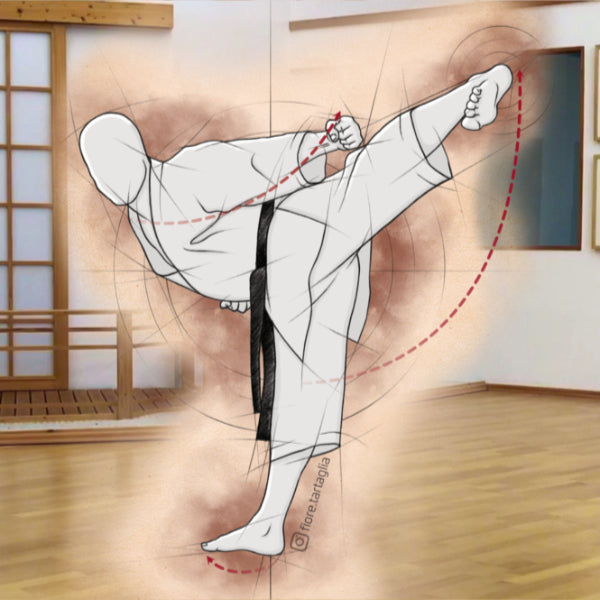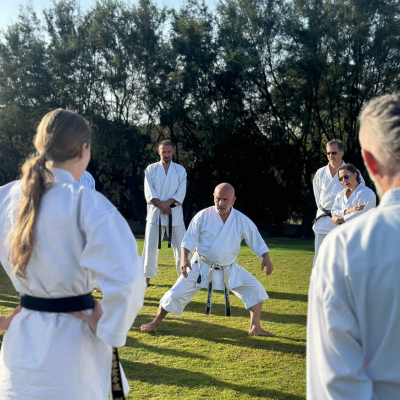HEIAN YONDAN – PEACE AND TRANQUILITY, 4TH STAGE.

The fourth kata of the Heian series
In Heian yondan, the enbusen is very complex. To ensure the correct end point, all positions and turns must be executed with great care. Stylistically slow movements appear, giving the kata its own unique rhythm.

Kata as a fight
The first two defensive techniques (Nos. 1 and 2) are performed without counter-techniques. This requires the karateka to interpret possible counter-attacks. This challenge brings with it the didactic requirement of recognizing the kata as a combat situation. Engaging with this
Thematic understanding is fundamentally essential so that the kata don't become a compilation of various techniques, but rather remain fights against imaginary opponents! Starting with the basic kata, the karateka is required to incorporate the fighting attitude into their understanding of the kata.
After the first technique, the right leg is slowly pulled towards the center of gravity and then slides forward again so that the arm techniques and the stance reach their end point at the same time (No. 2).

After technique No. 6, Chūdan mae empi uchi, the left foot is moved back half a stance. Only then does the double technique "Jōdan uraken uchi – Jōdan yoko geri keage" (No. 7) follow.

The backswing of the Uraken uchi (No. 12) is performed in different ways. However, it is always important to execute a stable final technique in Kōsa dachi. The center of gravity is placed forward and downward.
After the Mae geri, on the way to Kōsa dachi, care should be taken to ensure that the center of gravity remains constantly at the bottom.

Didactic aspect
As for the self-defense aspect of Kakiwake uke (Nos. 13 and 17), it is important to act quickly before the opponent can properly grab you (you free yourself from a grip both hands on the collar, or – even better – anticipate the attempted grip). The subsequent Mae geri can be replaced by a Hiza geri in Bunkai exercises to ensure the correct distance from the opponent.
Zuki numbers 15 and 16 are not drawn back to the hips, but rather extended directly forward from the kakiwake-uke stance. The challenge lies in the need to execute the punch forcefully despite the shortened path to the target. In a realistic situation, it's not always possible to execute the techniques optimally. Therefore, the didactic aspect of this execution should not be neglected.

Fend off the attack in its infancy
The technique Jūji uke (No. 3) appears for the first time in a kata. This sequence should definitely be practiced with a partner in order to be able to use the Gedan block against a kick at the right moment. If the opponent has already begun to extend his leg, the technique is ineffective.
The most important learning objective is to penetrate the opponent's cover in order to fend off the attack before it even begins.

Expansion of the repertoire
The demonstrated application of Technique No. 22 (Chūdan morote uke) is intended to stimulate the karateka's thinking. With a slight modification, it can also be used as an attack technique while simultaneously allowing control over an opponent.
The classic application of Defense No. 25 is to pull the opponent's head into the knee strike with both hands.
In Heian yondan there are some new techniques that should be practiced intensively, as they are rarely trained outside of the kata.
Duration: about 50 seconds

